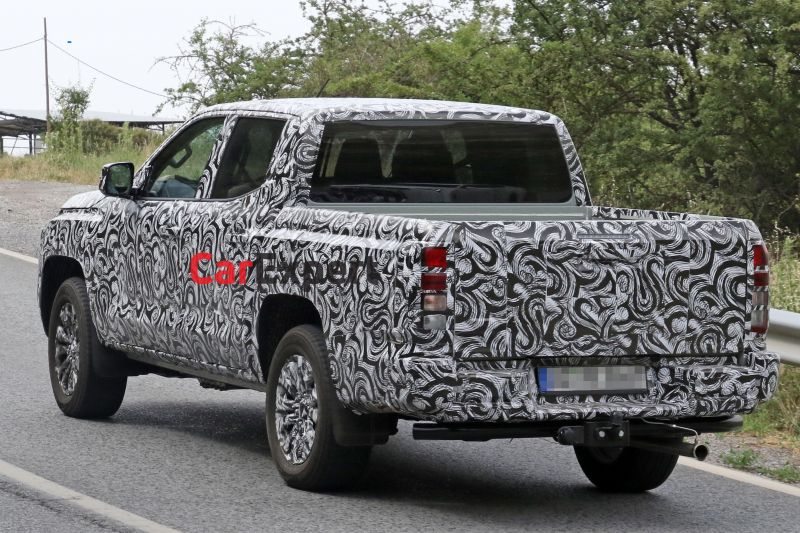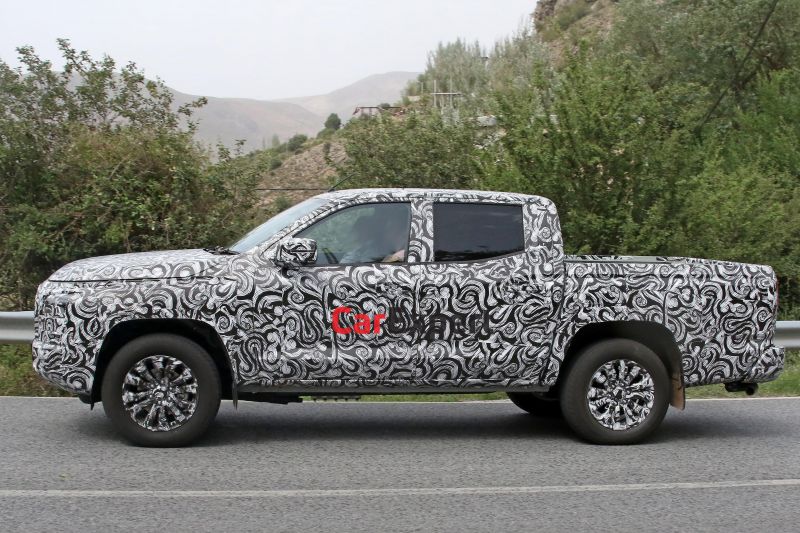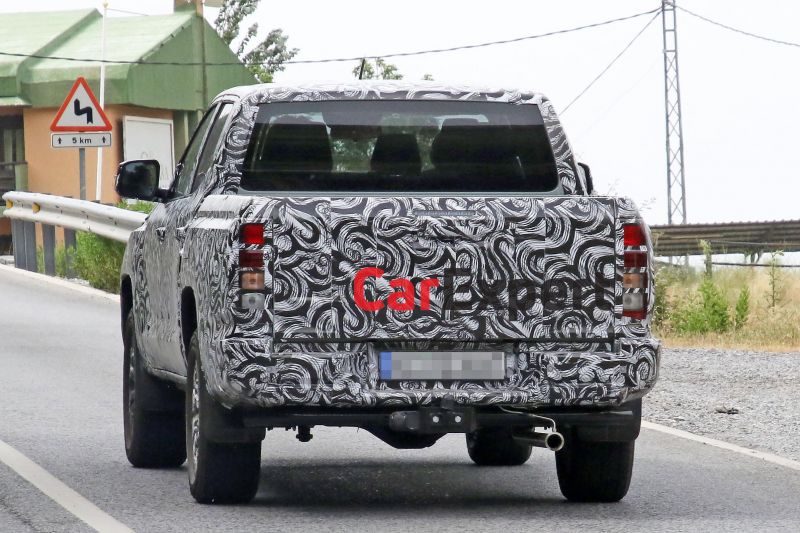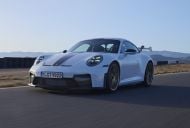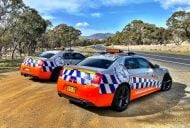The next-generation Mitsubishi Triton has been spied wearing its brand new, production-ready body for the first time.
This car was photographed by our spy agency undergoing hot weather testing in southern Europe.
Since its 2018 facelift, the current Triton has mixed a round, more organic shape with edgy styling details. The new ute will be squarer all round.
Up front the Triton sports the latest iteration of the company’s dynamic shield grille. This is seemingly flanked by a pair of split-level headlights, and topped off with a clamshell-style bonnet.
Around the sides the new Triton has rectangular wheel arches that are highlighted by prominent shoulder lines, although the shoulders don’t carry through for the entire length of the doors.
At the back there’s a long vertical stack of tail lights, and a deep tailgate. The new Triton is expected to be wider and longer than today’s car, which is 1.82m wide and 5.21m long in dual-cab guise.
Under the skin the Triton will share its platform with the next-generation Nissan Navara. It’s understood Mitsubishi is the lead developer for the new pair of global pickup trucks, although there should be significant styling differentiation between the two utes.
Drivetrains should be common across the Navara and Triton, and there has been much speculation the pair will be available with a plug-in hybrid drivetrain in the not-too-distant future.
Across the board, car brands are partnering up with other marques to develop their next-generation commercial vehicles.
This has long been a given for brands owned by the same company, just look at the Citroen Jumpy/Dispatch van, which with a light restyling is also sold by other Stellantis firms as the Peugeot Expert, Opel/Vauxhall Vivaro, and Fiat Scudo.
These collaborations also jump across company lines, with that same van marketed as Toyota ProAce in Europe.
In the ute world, the Mazda BT-50 is based on the Isuzu D-Max, and the upcoming Volkswagen Amarok shares its guts with the latest Ford Ranger.
When the current Navara and Triton were developed, Nissan held a minority stake in Mitsubishi, but the three-diamond brand was still an independent automaker, and the two utes were developed separately.
The current Nissan Navara was restyled to become the Renault Alaskan, and re-engineered to become the ill-fated Mercedes-Benz X-Class, while today’s Triton was also sold as the Fiat Fullback and Ram 1200.
The X-Class, Fullback and 1200 have already departed this mortal coil. The Alaskan is no longer sold in Europe, but continues to be made for the Latin American market.
In 2016 Mitsubishi was revealed to have illegally overstated its fuel economy figures for many of its domestic vehicles. With production of its popular kei cars paused, Nissan upped its shareholding to 34 per cent, which under Japanese law gives it a controlling stake in Mitsubishi Motors.
Since then Nissan has worked to integrate Mitsubishi into its alliance with Renault, with all upcoming models sharing platforms and most major components with Renault or Nissan models.
One of the first cars to benefit from the new corporate alignment was the Outlander, which is the twin-under-the-skin of the latest Nissan X-Trail.
In addition to this, southeast Asia and emerging markets have been officially designated as Mitsubishi’s primary sales focus. As such, the company is in the process of withdrawing from the UK, and its European range will soon become rebadged or lightly restyled Renault models.






